Immerse yourself in Barcelona's vibrant flavors and uncover hidden culinary gems with our expert insider guides. Plan an unforgettable trip today!
Read more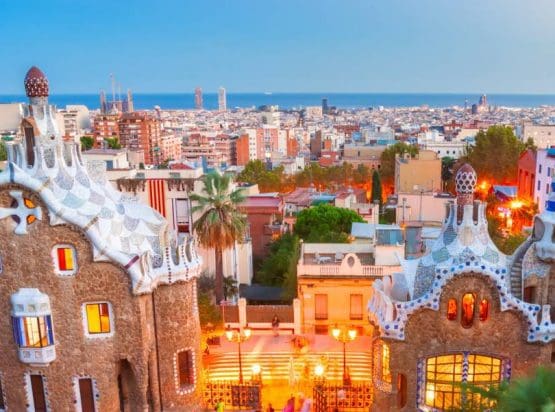
EXPLORE ALL OUR CATALUNYA WINE REGIONS GUIDE
Last updated: October 11, 2024
This hilly, verdant, and isolated region comes as a refreshing surprise after the relentless energy of Barcelona. Torres was the first international winery to invest in the zone, producing their award-winning Chardonnay label, Milmanda, from fruit grown in the appellation. Their single-vineyard red blend Grans Muralles is no less impressive – these limestone hills north of Tarragona have a natural affinity with French grapes.
Yet, until relatively recently, the vast majority of fruit was used to make Cava; still, wines took a back seat. But this is changing as investors look to expand their portfolios and exploit Conca de Barberà’s high-altitude terroir.
Discover more about Spanish Wine
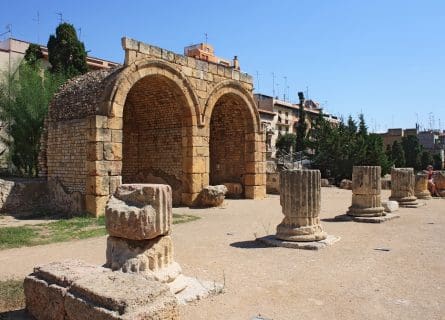
Who deserves credit for establishing a thriving wine industry in Catalunya? Many historians would single out the Romans for making viticulture an essential part of daily life; several of Catalunya’s most important cities, including Barcino (Barcelona) and Tarragona, were founded in the Roman era.
Meanwhile, winegrowing spread across Hispania’s fertile landscape as Catalunya became decisively Romanised. Indeed, whatever one might say of these conquerors, the moral force of their administration must have been persuasive. They kept the peace for over five centuries while Catalunya prospered. However, Spain’s future looked increasingly bleak as the Western Empire became a target for power-hungry rivals.
In AD 476, the Romans lost control of their dominions as the Germanic Visigoths and Vandals marched across Europe. The former claimed Toledo as their capital in the 6th century after King Liuvigilid conquered most of the Iberian Peninsula, making peace with his Frankish neighbors. Nevertheless, the Visigoth’s power base was fragile; his successors’ constant infighting and gross mismanagement left the door open for a hostile takeover. That event occurred in 711, when the Muslim general Tariq landed his Arab and Berber army in Gibraltar, quickly conquering Andalucia. Within a few years, Catalans were subservient to their new Muslim overlords. Viticulture all but disappeared in the hills of Conca de Barberà.
However, the Muslim occupation of northeastern Spain was relatively brief. A well-disciplined army of Frankish knights retook Girona in 785 and Barcelona in 801. By the Middle Ages, Catalunya was allied to neighboring Aragon, and winegrowing had returned to almost every province in eastern Spain. The complete historical record of this Renaissance can be seen today at Abadia de Poblet, a wine producer housed inside a 12th-century Cistercian monastery.
Monastic Contribution Wine Production
Founded in 1151 by Cistercian monks from France, it occupies a spectacular position at the foot of the Prades Mountains. Vines were lovingly cultivated by the monks and members of the order of the Knights Templar, while Catalunya’s naval empire conquered the Balearic Islands, Valencia, and Roussillon in France. By the late 1700s, Conca de Barberà also enjoyed its moment in the sun. Exports to northern Europe and the US rose dramatically during this period, reaching a peak in the mid-19th century.
Meanwhile, important infrastructure projects—a railway line connecting Montblanc to Reus—encouraged more investors to settle in the region. Expansive terraces were also constructed in the foothills of the Prades, used to enlarge the area under vine by increasing vine density. Yet the arrival of phylloxera in Europe virtually destroyed the local industry; the phylloxera louse attacked vine roots, devastating regions worldwide.
Fortunately, a progressive group of winemakers decided to form an agricultural cooperative in the aftermath of the phylloxera disaster. After their inauguration in 1894, this syndicate regrafted large swathes of vines onto resistant American rootstock. Many decades later, Conca de Barberà was awarded DO status in 1985.
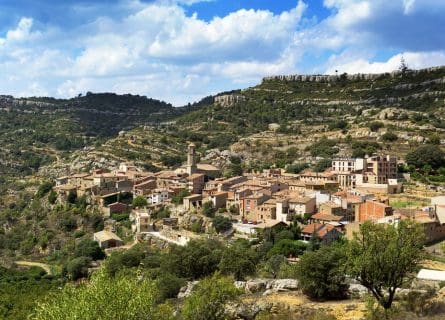
Conca de Barberà is an underrated jewel in central Catalunya. Vineyards and woods cover the undulating landscape: rolling green hills are punctuated by medieval villages and ancient monasteries. To the north is another up-and-coming DO: Costers del Segre – Penedes and Montsant are situated to the east and west, respectively.
The vineyards are spectacularly located in a valley sandwiched between the Francolí and Anguera rivers, flanked by several mountain ranges. It is a splendid place to make premium wine: 14 municipalities in the Tarragona province are entitled to market a Conca de Barberà label.
Nevertheless, the Mediterranean climate can present its fair share of challenges. Water scarcity can be an issue during the long, dry summer season; winters are invariably mild in Conca de Barberà. Yet vines planted on the foothills benefit from diurnal temperature variation: elevation can rise to over 600 meters above sea level in some places. As a result, both day and evening temperatures are moderated by altitude, which is a key ingredient in the local quality equation.
Indeed, the Torres family was attracted to Conca de Barberà precisely because it has a proven track record of yielding fresh and balanced wines with good acid. In the hot climate of central Catalunya, that is an impressive achievement.
Vital Role of Local Soils
Local soils also play an important role in retaining moisture during the summer season. Limestone is abundant on the valley floor, a terroir justly celebrated for its porosity and permeability; vines do not like extended periods of drought or ‘wet feet.’ Fortunately, these impoverished soils encourage the vines to grow deep root systems that can tunnel deep beneath the stratum in search of vital minerals. There are also outcrops of metamorphic slate in the foothills of the Serra de Prades – the ideal terroir for Garnacha Tinta and Carignan.
Cava producers are willing to pay a premium for Conca de Barberà grapes: locally grown Macabeo (Viura) and Chardonnay are highly prized for their vibrant acidity and ripe fruit profile. Indeed, some of the finest Cava blends inevitably contain fruit from the upper reaches of the Prades foothills. As a result, competition for the coolest sites is fierce, and growers can outflank their neighbors in Penedes when it comes to bargaining for a higher price per kilo. The juice from these high-quality berries is vinified (typically in stainless steel) before it is subject to a secondary fermentation in bottle.
Top cuvées will be aged for several years before the yeasty sediment is ejected (a process called disgorgement) and the brand enters the market. Spain’s leading bubbly is highly recommended as an exciting alternative to Champagne. Lower yields and longer bottle-aging continue to raise standards.
Rising Importance of Still Wines
Yet still wines are becoming more important to the regional economy. The red-skinned Trepat has won pundits for yielding exceptional rosés – aromatic and fresh. But, for many aficionados, the single-vineyard Chardonnays and superlative red blends deserve our adulation. Grans Muralles provides the benchmark, a beguiling concoction of Garnacha/Carignan/Monastrell in addition to Garró and Querol. Expect a deep color and a rich bouquet of damson, sour cherry, graphite, and garrigue.
Its cornucopia of red and black fruits defines the palate, always enlivened with a touch of fennel allied to a salty minerality. It remains one of Spain’s finest reds. And have you tried Milmanda? It is quite possibly the most Burgundian Chardonnay made in Catalunya today: perfumed, elegant, and beautifully balanced. Blends of Macabeo and Chardonnay are no less fine.
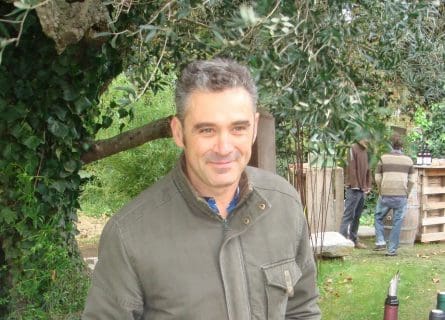
Growers in Conca de Barberà are waking up to still wine – the global market for whites and rosés is expanding at an impressive rate. While Cava producers remain a pervasive influence in the DO (they provide a ready market for grapes with few strings attached), more families are bottling their wines. Some of these niche labels are relatively unknown abroad, but they have much going for them, including seductive aromatics and beautiful freshness.
Meanwhile, Torres has led the way in dynamic innovation. Their experiments with Indigenous Catalan grapes—such as Garró and Querol—have produced some very original and authentic flavors. Indeed, the range of high-quality still wines is growing continuously, thanks to ongoing investment.
You could start with Celler Jordi Llorens Blankeforti: a potent mix of Garnacha Negra and Cabernet Sauvignon. Or, delve into the glorious world of old-vine Macabeo with the pungent brilliance of Josep Foraster’s Brisat del Coster Macabeu. Celler Escoda-Sanahuja’s Mas del Gaio is another standout white, produced from a bend of Macabeo, Garnacha Blanca, and Parellada. Aged in amphora, it represents the new wave of Conca de Barberà wines. Modern Conca de Barberà is increasingly one of Spain’s most exciting wine regions. Let the investment flow.
Chardonnay is a green-skinned grape varietal native to the Burgundy wine region in France and one of the most popular varieties worldwide.
Find out moreDiscover the Allure of Grenache Blanc: Full-Bodied White Wine from Northeastern Spain. Experience the Richness of High Alcohol, Low Acidity Wines.
Find out moreDiscover Viura: Rioja's Prominent White Grape & Catalonia's Macabeo. Explore its versatility in exquisite wines. A must-read for wine enthusiasts.
Find out moreUnveil the allure of Parellada grape: a Spanish gem crafting elegant sparkling & white wines. Explore its unique qualities & flavor profile.
Find out moreSumoll Blanco is a rare white-wine variety found in Catalonia, Spain. Once commonly planted, it has been replaced by more commercially viable options, despite its quality, which is characterized by good acidity, minerality, and flavors like lemon and pineapple. Permitted in the Tarragona and Penedès DOs, it is used in both oaked and unoaked styles.
Carignan is a red grape variety that grows mostly in Southern France, and is often used as a blending grape
Find out moreDiscover the irresistible allure of Cabernet Sauvignon—a worldwide favorite with robust, dark-bodied flavor. Unleash your wine journey today!
Find out moreGarnacha: Spain's Red Gem. Akin to Pinot Noir, it bridges terroir and winemaking, crafting captivating expressions.
Find out moreMerlot is the most cultivated grape in Bordeaux and closely related to Cabernet Franc
Find out moreSumoll, a rustic black grape native to Catalonia's Penedès region, yields red, white, rosé wines, and Cava. Once widespread in Spain, it faced a decline since the 1980s. Now revived, it offers distinctive wines valued by local winemakers and is renowned for its unique flavor profile of red berries, herbs, and earthy tones. Also known as Vijariego Negro, it features in the Canary Islands and Pla de Bages DOPs.
Trepat is a red grape variety native to northeastern Spain, specifically the Catalonia region. It produces light-to-medium-bodied wines with low tannins and high acidity, making them particularly well-suited to sparkling wine production. Trepat is gaining popularity among wine enthusiasts for its unique flavor profile and versatility in winemaking.
Discover Tempranillo: Spain's iconic red grape. From Ribera del Duero to Toro, it yields concentrated wines. Explore its synonyms and unleash its prowess.
Find out moreThere are two sides to Catalunya’s restaurant industry. One involves Michelin stars and molecular gastronomy – the ‘El Celler de Can Rocas’ of this world. The other heavily focuses on tradition and simplicity: fresh ingredients and classic recipes. Chefs in Conca de Barberà generally adhere to the latter paradigm, while artisan producers offer a delicious array of tempting morsels: locally cured sausages, honey, olive oil, and ham.
Nearby, Tarragona is renowned for its fideu (noodles cooked in fish stock) and arròs negre, a time-honored way of preparing rice. The grains are slowly cooked in squid ink and served with prawns or calamares, producing something that sounds unappealing but tastes delicious!
Guide to Catalan Gastronomy: Read more

Immerse yourself in Barcelona's vibrant flavors and uncover hidden culinary gems with our expert insider guides. Plan an unforgettable trip today!
Read more
Immerse yourself in Begur's vibrant flavors and uncover hidden culinary gems with our expert insider guides. Plan an unforgettable trip today!
Read more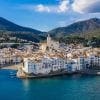
Immerse yourself in Cadaquès's vibrant flavors and uncover hidden culinary gems with our expert insider guides. Plan an unforgettable trip today!
Read more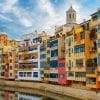
Immerse yourself in Girona's vibrant flavors and uncover hidden culinary gems with our expert insider guides. Plan an unforgettable trip today!
Read more
Immerse yourself in Sitges's vibrant flavors and uncover hidden culinary gems with our expert insider guides. Plan an unforgettable trip today!
Read moreIf you would like us to customize an exclusive luxury tour, contact us and let us know your travel plans. We offer luxury food and wine tours for private groups of a mininium two guests. In addition, all of our private, chauffeured tours are available year-round upon request.

